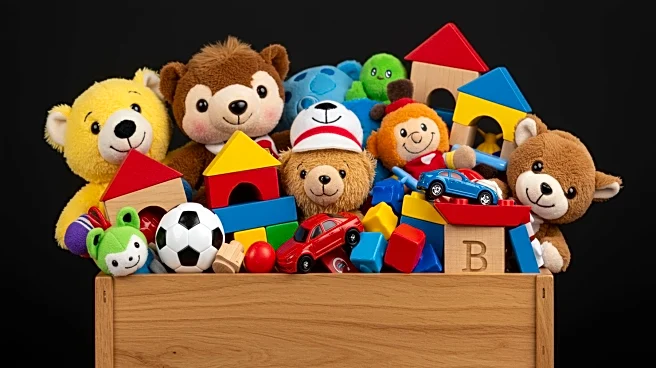What is the story about?
What's Happening?
In the first half of 2025, U.S. toy sales experienced a 6% year-over-year increase, with units sold growing by 3%, according to a Circana report. This growth follows three years of stable average selling prices, which have now risen by 3%. Adults have significantly contributed to this surge, driving an 18% increase in toy sales compared to the previous year. Children aged 9 to 11 and 12 to 17 also saw sales increases of 9% and 6%, respectively. Categories such as puzzles and games, explorative toys, youth electronics, action figures, and building sets have shown notable growth. The report highlights that seven out of eleven toy categories tracked by Circana posted growth during this period.
Why It's Important?
The increase in toy sales and prices is significant as it reflects changing consumer behavior, with adults increasingly purchasing toys. This trend is supported by companies like Lego and Build-A-Bear, which have expanded their offerings to cater to adult consumers. The toy industry faces challenges from tariffs, particularly those resulting from President Trump's trade policies with China, as a large portion of toys imported to the U.S. come from China. The industry's resilience is crucial as it approaches the holiday season, a critical period for sales. Companies like Mattel are attempting to mitigate price increases by keeping many products priced below $20, despite facing revenue declines.
What's Next?
As the holiday season approaches, the toy industry will need to navigate the impact of tariffs and potential price increases. Retailers and manufacturers may need to adjust strategies to maintain consumer interest and manage costs. The industry's ability to adapt to these challenges will be crucial in sustaining growth and meeting consumer demand during this peak sales period.
Beyond the Headlines
The growing interest in toys among adults and teens could lead to long-term shifts in marketing strategies and product development within the toy industry. This trend may influence how companies design and promote toys, potentially leading to more diverse offerings that appeal to a broader age range.
AI Generated Content
Do you find this article useful?















